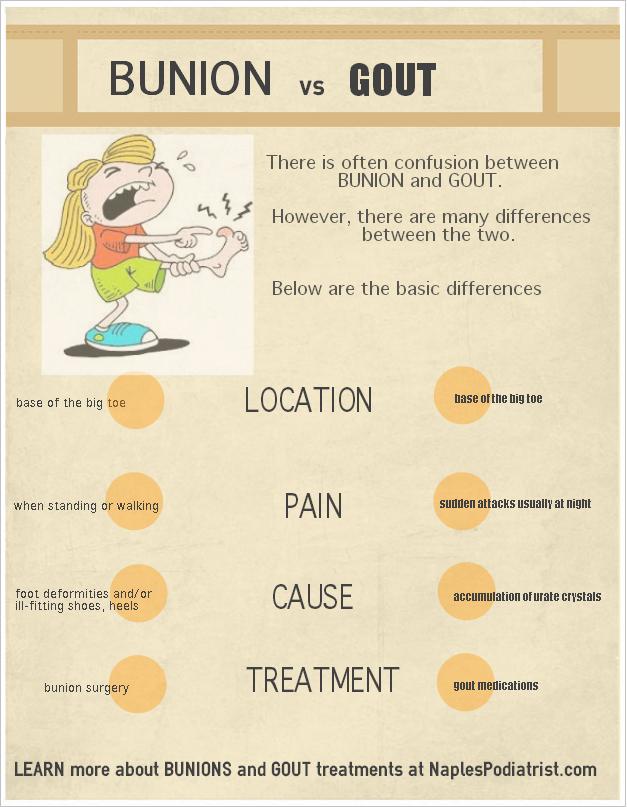What is the Difference between a Bunion and Gout?
Bunions and gout are both very common foot problems that can cause debilitating pain. But how do you know if the bump on your foot is a bunion or gout?
Gout is actually a complex form of arthritis. It is usually characterized by severe and sudden attacks of pain, which may even wake you up in the middle of the night. The sensation is described as a feeling that the big toe is on fire. The joint at the base of the big toe is usually red and tender.
A bunion, on the other hand, is a bony bump at the base of the big toe. It can also be extremely painful. The pain is usually felt when walking, as the weight of the entire body rests on the feet. There is pressure on the joint and pain is more pronounced when wearing tight shoes or high heeled shoes.
As for the cause, gout is due to accumulation of urate crystals in the joints, causing the swelling on the big toe, thus the intense pain of a gout attack. The elevated level of uric acid in the blood is the reason behind gout formation. In contrast, bunions are often caused by a deformity in the joint at the base of the big toe, either due to inherent problems in the feet or due to years of wearing ill-fitting shoes. The bones of the big toe are pushed in the direction of the smaller toes.
In treating gout, medications are used to treat acute attacks and also to prevent future gout attacks. In bunion treatment, however, medications rarely resolve the problem. Usually, painkillers are only given for a short while in order to manage pain. But the definitive treatment for bunion is bunionectomy. The aim of bunion surgery is to straighten out the joint to relieve pain and this is the only way to correct a bunion.
There are basically two major types of bunionectomies. First is the traditional bunion surgery which often takes 6 weeks post-op for full recovery because it involves cutting the bone. There is also a long cut on the side of the big toe, resulting to an elongated scar.
At present, there is the newer and innovative minimally invasive bunion surgery which aims to repair the skewed big toe by using wires or screws to keep the bones in place. Tiny instruments are used in this keyhole surgery and it doesn’t involve any cutting of the bone. Incision is very small and is usually less than 5 millimeters. This is the reason why it is also called no scar bunion surgery or scarless bunionectomy. The procedure is often performed as an outpatient surgery, meaning you can walk out of the clinic on the same day of the bunion surgery.
To learn more about treatment options for bunions, including no scar bunion surgery, visit any of the Family Foot and Leg Center, P.A. offices in Lee, Collier, and Charlotte county in SWFL or call (239) 430-3668 (FOOT)
for more information on scarless bunion surgery
